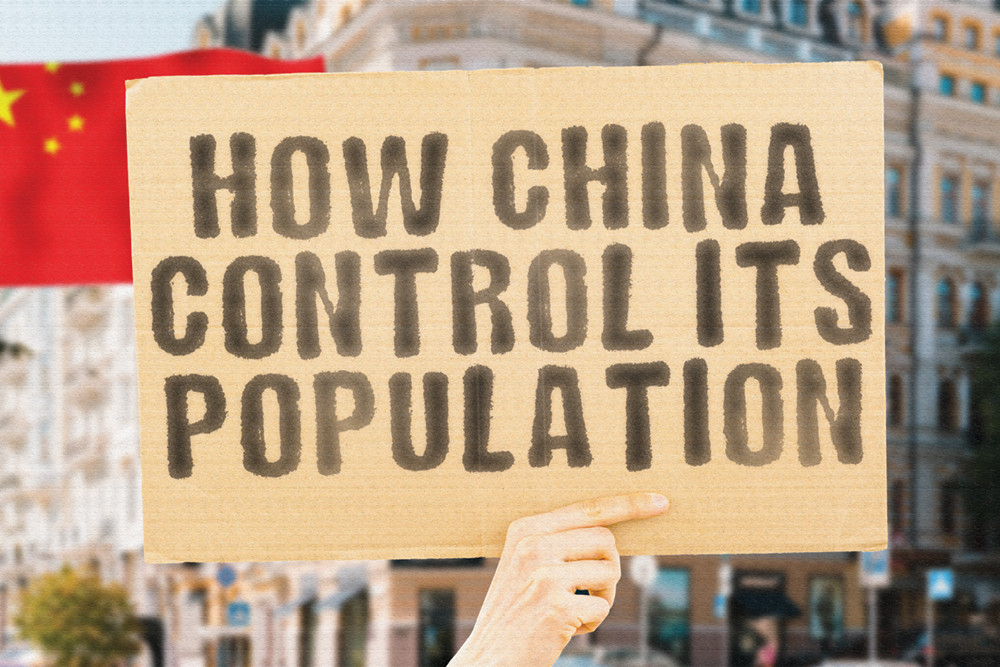
Over the last decade, there has been a growing trend among radical free marketeers: building new cities in hopes of achieving economic freedom. There are good reasons to be sceptical of this strategy.
The idea is relatively simple. It goes roughly like this: first, make a deal with a government to create a Special Economic Zone or a similar legal entity. This small geographical zone will be exempt from taxes, currency controls, drug laws, or any other regulations that are irksome from a free market perspective. Then, build a new city in that zone.
Various flavours of this strategy are promoted by groups like Dr Titus Gebel’s Free Cities Foundation, the Seasteading Institute, as well as Patri Friedman’s Pronomos Capital. Even former US President Donald Trump has started promoting the concept of ‘Freedom Cities’.
There is a very high demand for free market cities. Some of these initiatives have managed to secure tens of millions of dollars in funding, and are moving forward rapidly. Famous backers include celebrity investors such as Peter Thiel, Balaji Srinivasan, Tim Draper, Vitalik Buterin and Naval Ravikant.
I have worked as a consultant for this type of project since 2016, and have worked as a consultant in various capacities for at least 30 different ‘economic freedom’ projects. Over time, my experiences working closely with these projects have made me more sceptical of their ability to create long-term economic freedom.
The Historical Case for Building Free Market Cities
There are many historical precedents that, on the surface, give this strategy a high degree of surface plausibility. First, there is a long historical record of very free market-oriented city-states such as the Italian renaissance states of Venice, Genoa and Florence. There have been many other examples, in places as diverse as modern-day Kenya’s medieval Swahili city states, the city states of the Hanseatic League, or even today, the few city states that remain – such as Singapore, Liechtenstein, and Monaco – are the countries with the most economic freedom. Many libertarian scholars such as David Friedman have pointed out that city states tend to adopt free market policies because they have highly localised governments, lack the collateral to go into debt, and the governments have a generally ‘for-profit’ mentality.While it is true that governments have granted SEZs significant amounts of economic freedom, there is a misconception that they can be used to ‘escape’ regulations.There is also the precedent of Special Economic Zones (SEZs), which are small geographically confined business parks that have been created by states to increase economic freedom. Some SEZs are very large – and are cities with a population in the tens of millions, such as Shenzhen. Most Americans and Europeans are unaware of their existence, because no ‘true’ SEZs exist there. Countries as diverse as China, the UAE, Colombia, Panama, and South Korea successfully managed to use SEZs to create ‘free market enclaves’ and liberalise their economies. This resulted in significant economic growth. Finally, there are many groups today which have managed to achieve a high degree of social and economic freedom in practice, although on paper they have no rights. In Mexico, various armed groups have carved out small territories. One Mexican example is the anarcho-communist Zapatista rebels who have seized control of Chiapas. Another is the southern city of Acapulco, which is controlled by drug cartels, who for the most part act as a check and balance on corrupt local authorities. A group of American libertarians have even chosen to create a small enclave in Acapulco. There also are communes. In Denmark, a group of self-described ‘hippie squatters’ took over an abandoned military base, which they turned into a small village where drugs are freely sold and used called Freetown Christiania. These precedents give radical free market urbanists very strong arguments to make the case for creating free market-oriented city states.
Does the Success of SEZs Translate to Cities?
While it is true that governments have granted SEZs significant amounts of economic freedom, there is a misconception that they can be used to ‘escape’ regulations. Either SEZs are directly created by the government (as in China or Oman), or the government creates a regulatory approval system that allows private developers to create their own zones (as in the Dominican Republic or Colombia). In all cases, creating zones requires the consent of the local government. Governments are willing to create SEZs when two conditions are met: first, a high-level faction sees the need for increased economic freedom; and second, nation-wide reform is impossible. There are many reasons why high-level government factions might see the need for economic freedom. Motives generally fall into one of three categories: the political need to alleviate poverty (such as in Colombia), the desire to create economic growth to increase national security (such as in China in the 1980s), or the desire to enrich the governing class (such as in Iran). There are also many reasons why governments might not be able to reform the country as a whole. Many politicians in a country might be constrained by the lobbyists who support or oppose them. Labour unions might go on strike if they are angered. Political opponents could organise violent riots that disrupt life if they are unsatisfied.Governments are willing to create SEZs when two conditions are met: first, a high-level faction sees the need for increased economic freedom; and second, nation-wide reform is impossible.When these two circumstances are met – high-level factions want economic freedom, but nationwide reform is impossible – then governments are willing to create SEZs. This explanation for the political origin of SEZs also goes a long way to explain why most SEZs fail. The very forces that prevent nationwide reform hamper the success of economic zones. In one country where my team worked, the local energy grid was ineptly managed by a semi-public monopoly. There were constant electrical outages. The builders of the SEZ with which I was working with decided to create their own private power company. The local monopoly energy company lobbied to oppose the zone. The zone even offered to pay off the local monopoly energy company and keep their own private energy provider. The monopoly energy company refused because it would expose them to the public as being incompetent. Ultimately the zone was created, but was required to use the local energy monopoly’s electricity. This has resulted in serious blackouts, energy shortages, and has crippled an otherwise viable zone. In another country, local industry groups had lobbied to create a restrictive system of occupational licensing. The government was about to pass legislation to create the zone, but at the last minute, key politicians would mysteriously withdraw support. Eventually, it was revealed that lobby groups in favour of occupational licensing were convincing politicians to oppose the project. As far as I know, this country has still not managed to pass its SEZ legislation. Most zones enjoy a high degree of economic freedom – but only for industries that do not interfere with local special interests. This is why the zones with the highest degree of economic liberalisation are business parks and not cities. Suppose that a country has four key industries: agriculture, steel mining, automotive manufacturing, and call centres. All four of these industries have entrenched lobby groups who have already managed to pass protectionist legislation. Any zone that touches any of these four industries will likely be opposed. The larger a zone is – the closer it comes to being a full-fledged city – the more likely it is to attract those industries. Small industrial parks that target entirely new industries – such as pharmaceutical manufacturing – will likely be ignored. There are occasional cases where stars align perfectly, and city-scale SEZs do achieve a high degree of economic freedom. The most noteworthy examples are China during the Deng Xiao Ping era (1978 - 1992), the United Arab Emirates, and India under Narasimha Rao (1991 - 1996). In all three of these cases, the countries as a whole moved away from central planning and towards economic liberalisation. City scale SEZs were simply part of this broader trend.
Global Constraints
There are also global constraints and treaties that prevent free market SEZs or new cities from going too far. The World Trade Organisation (WTO) was created in 1995 when 164 countries signed a treaty to ‘reduce tariffs and other barriers to trade’. The WTO is a para-governmental body that enforces various treaties. The WTO has sued several SEZs for what it calls ‘unfair competition’. In 2019, India created SEZs that exempted many companies within those zones from import and export tariffs. The United States government complained to the WTO that Indian zones were too competitive. Although the companies in these zones did not receive any money from Indian taxpayers, the WTO still ruled that the tax breaks were ‘prohibited subsidies’. The WTO sued the Indian government, obtained a ruling, and gave the Indian government 180 days to abolish its SEZs. If India did not comply, it risked facing sanctions from the 163 other countries participating in the WTO. India ultimately complied, and changed the incentives within its zones.There is significant empirical evidence that people in cities are more pro-government than people in rural areas. This appears to be true in almost every country.There are many other international bodies that have shut down SEZs for implementing policies that are radically pro free market. These include the OECD, European Union, and UN. These global bodies are dominated by nuclear powers with significant military strength such as the US, France, UK, Russia, and China. Countries have no choice but to comply. A high-level official in the ministry of finance of a small Eastern European nation in the EU once complained to me that ‘our country isn’t really independent’. He explained to me that every time his government attempted to increase economic freedom, the European Union would sabotage their efforts. Any attempts at creating radical free market cities will get shut down as soon as they start gaining traction. The countries that agree to host them will get punished by lawsuits, sanctions, and potentially even threats of military force. The goal of these sanctions will be to make the people of the countries suffer to turn them against the free market projects.
Cultural Divides
Finally, cities do not create a cultural environment where people support liberty. Hayek, in The Constitution of Liberty, wrote: “It is not to be denied that modern developments, especially the development of the large city, have destroyed much of the feeling of responsibility for local concerns which in the past led to much beneficial and spontaneous common action.” There is significant empirical evidence that people in cities are more pro-government than people in rural areas. This appears to be true in almost every country. Pew Research found in 2017 that in American rural counties, 54% of voters are Republican, and 38% are Democrat. By contrast, in urban counties, 62% were Democrat, and 31% were Republican. Suburban counties were almost perfectly evenly divided. The same study found that 70% of urban voters said that ‘government should do more to solve problems’ while only 49% of rural voters said the same thing. Polls have found similar results in Europe. An official EU poll from 2021 found that 65% of Europeans in rural areas supported increased decentralisation when it came to government spending decisions. Another study published in the Cambridge Journal of Regions found that, across the entire European Union, voters in more rural areas are 57% more likely to be conservative. The same urban versus rural electoral divide has been observed in democracies as diverse as Brazil, the Philippines, and Australia. For a more visual comparison, all readers have to do is compare various maps showing population density and election results, then look up which parties win in which areas. For example, the Spanish government’s official population density map with ZEIT’s map of Spanish election results reveals that urban areas tend to vote for liberal pro-EU and pro centralisation parties while rural areas vote for more eurosceptic and more pro-decentralisation parties. There are many reasons why people living in rural areas might be more sceptical of big government. First, rural areas are physically further away from the centres of power. Second, living closer to nature breeds self-reliance. Finally, rural areas tend to be more religious.What is the Solution?
Although creating new cities to achieve improved economic freedom might not be a viable strategy, there is no need for pessimism. First, there are many other non-electoral solutions to achieve freedom. Many groups have managed to create communities that lack de jure freedom, but in practice, are not bothered by local governments. Many communes that were created in the 19th century are still in operation today, despite a complete lack of legal recognition. In many countries, creating this type of de facto independent planned communities is viable. Second, Special Economic Zones are viable as long as the focus is business parks, rather than cities. Business parks will likely slip by unnoticed by local lobbyists, and are less likely to attract the ire of activists and NIMBYs. From the perspective of an activist, a new ‘startup city’ sounds scary, and protesting it sounds exciting. Opposing an ‘industrial logistics park’, on the other hand, sounds extremely boring. As long as they are compliant with the rules created by international bodies, these parks can still have private courts, low corporate tax rates, and other radical free market reforms. Finally, there needs to be more serious academic research into the reasons why free market cities succeed or fail. Often, academic research boils down to blind cheerleading for the creation of new cities by touting their benefits. By contrast, opposition groups produce biased studies which ‘prove’ that all attempts to break free from the system are inherently evil. One way that you can help is by supporting groups such as the Charter Cities Institute, a non-profit devoted to studying how new cities can improve governance. Recently, the Charter Cities Institute published a map showing all of the new cities built since 1945 – whether by the government or by the free market. These data will allow other researchers to take a serious empirical, rather than political, look at the question of building new cities. Source: fee.org READ ALSO:
Published Date: June 27, 2023, 12:00 am
Post Comment
E-Magazine
RELATED Economics





